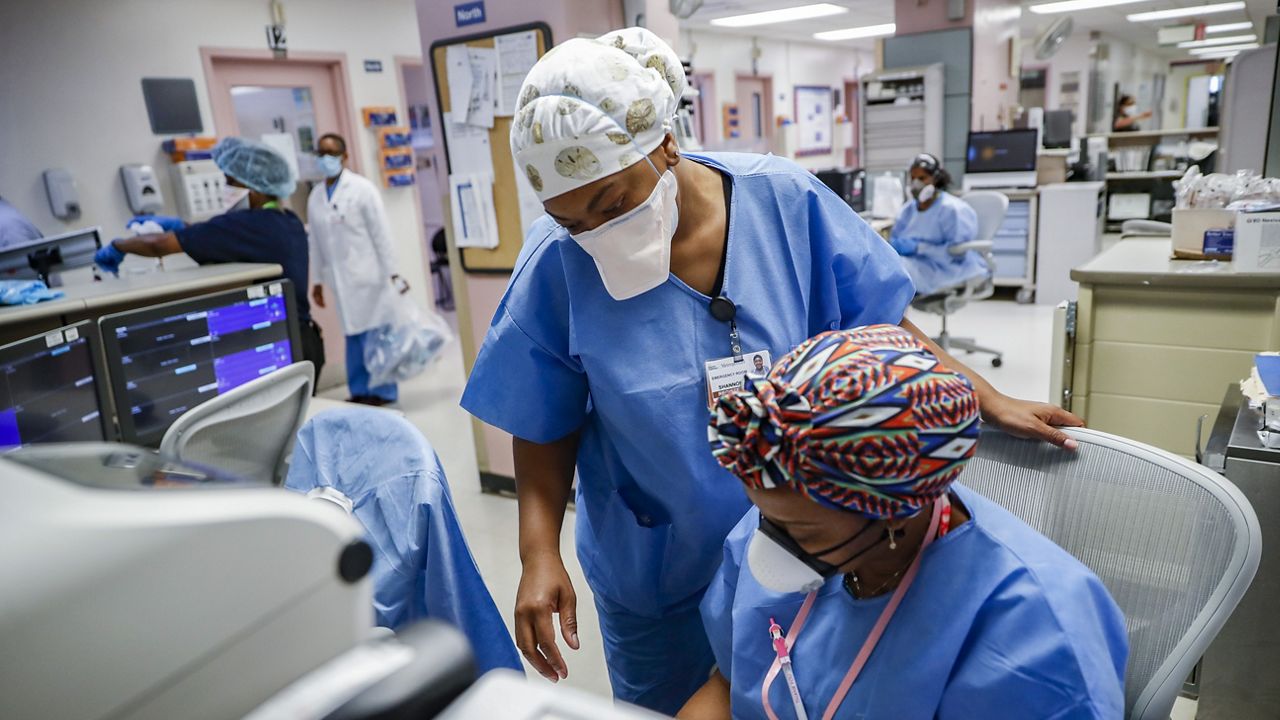In just a month’s time, COVID-19 hospitalizations have jumped more than 40% across the country. Public health experts hope with this latest surge, those needing care for health emergencies unrelated to the coronavirus will not be left behind again.
In a study published this week in JAMA Network, a team of researchers from NYU Grossman School of Medicine showed proof of the dramatic drop in hospitalizations for patients with chronic diseases and medical emergencies including heart issues, stroke, and digestive problems. It is a trend many hospitals across the country reported seeing.
NYU's Dr. Leora Horwitz said right away she and her colleagues knew it would be a problem.
“In the peak period, in late March and April, we saw more than a 50% drop across the board in non-covid cases," she said. "But for some diseases, it's even more so. We saw two-thirds drop-off in appendicitis. Everybody should still have appendicitis at the same rate. We saw three-quarters drop-off for heart attack and similar huge reductions in things like skin infection. And, of course, at the time, we also recognized that we had a lot more deaths at home,” said Horwitz.
There is concern that as more than 40 states are seeing an increase in COVID-19 cases, that many Americans will once again choose to forego necessary treatments due to fear of the virus.
The University of Kentucky HealthCare system saw a decrease in heart attack and stroke patients in its emergency department, and also fewer patients seeking advanced subspecialty care in May. During a call with reporters this week, Dr. Mark Newman, Executive Vice President for Health Affairs at UK HealthCare, sought to ease the public’s fears.
“Our case mix index, which is a good indication of how sick patients are when they come to us, is higher than it's ever been. And a lot of that is due to patients waiting too long before they seek care,” said Newman. “You need the care that you need to prevent things. I want people to continue to reiterate that, that it's a safe place to be if you can come to the hospital or come to your physician to get care.”
Horwitz says the silver lining in the midst of this latest surge is that hospitals have learned many lessons over the past eight months. Walking into a hospital today she says, is much a different experience than it was in March or April in peak transmission areas.
“Hospitals now routinely are using preventive equipment and masks for everybody. We are testing every patient now. Even if they're not here with COVID-like symptoms we have a routine, we are much more capable of managing both COVID and non-COVID cases. So I would say to the public now, and even going forward, you should not be afraid to seek care if you're sick. There is no need for you to suffer at home,” said Horwitz. “My hope is that those types of excess deaths will be reduced in the end going forward.”
As cases dropped over the summer months in the New York area, Horwitz’s study found that non-COVID hospitalizations rose back to about 90% of their usual volume at NYU Langone Health, but there are some diseases that have remained lower than normal, like heart attacks.
“One theory is that perhaps it's because there's less air pollution, people are perhaps eating a little bit better, perhaps they're sleeping more, they're not commuting as much. We think that there actually is less disease. We also see much less pneumonia, much less COPD exacerbations or emphysema, bronchitis exacerbations. And we think that's because people wear masks and a lot of those other diseases are being blocked also,” said Horwitz.
The hospital has also seen fewer asthma attacks. Horwitz says mask wearing may be the cause behind the drop in these common ailments. “We’re blocking the bacteria that give you pneumonia. And so that's making us really rethink a little bit what we should be recommending to people normally, even when there's no COVID.”
While cases continue to rise in Kentucky, UK HealthCare has been able to keep normal operations going, safely serving both non-COVID and COVID-19 positive patients. One hospital official though cautioned, what happens outside hospital walls plays a major factor in who is treated within them.
“If every person takes a more active responsibility in their own mask wearing, social distancing, handwashing and that expectation of others, we can continue to flatten the curve down like we did before and that was really very successful, I think, in the past,” said Dr. Colleen Swartz, VP for Hospital Operations at UK Healthcare. “I think the information is out there for everybody to take an aggressive posture to prevent transmission by doing some very simple practices.”



